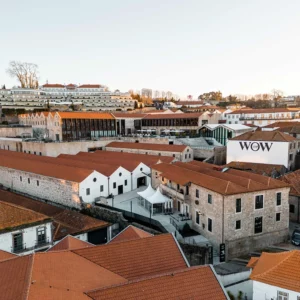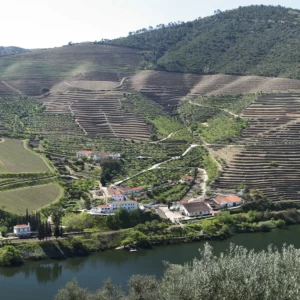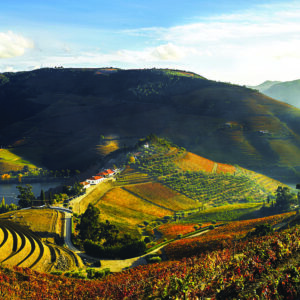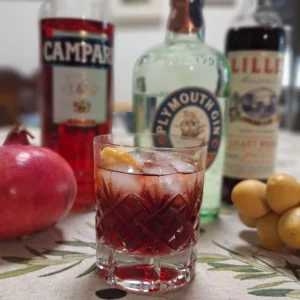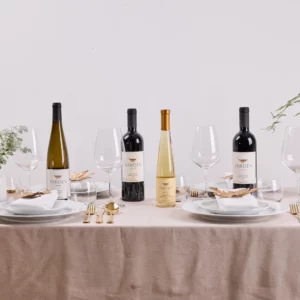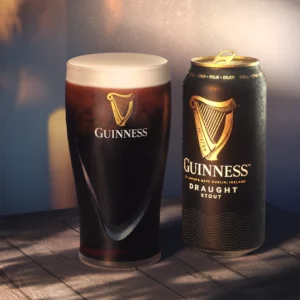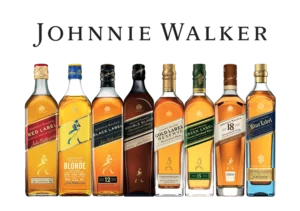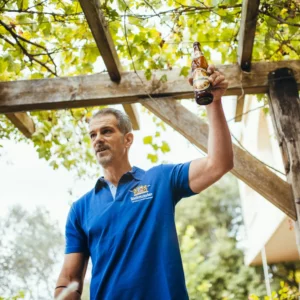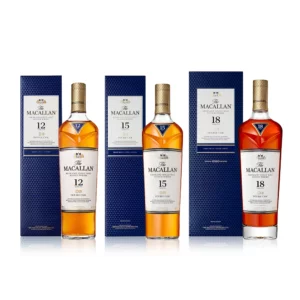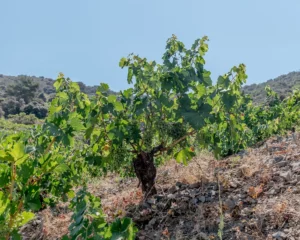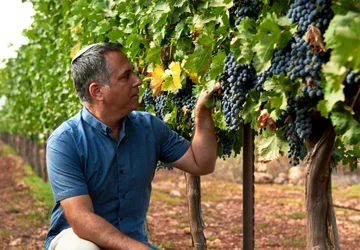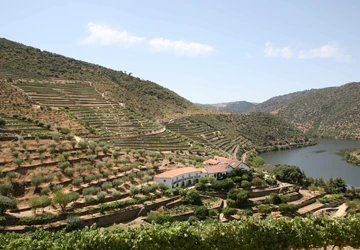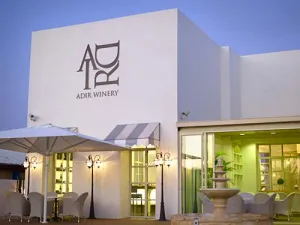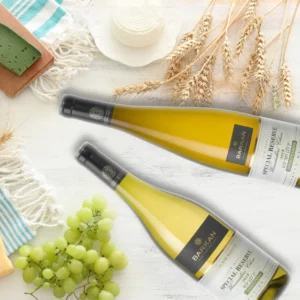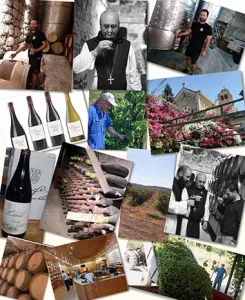Farewell to Rishon Le Zion Wine Cellars. This summer after 125 years of continuous use, the historic winery will close its doors. It was Israel’s first commercial winery and for most of that time it was Israel’s largest winery
The story of the winery was the Zionist dream come true. It operated in three different centuries, the 19th, 20th and 21st, under the Turks, the British and the State of Israel. It represents both the story of Israel and the story of Israeli wine.
The first modern experimental vineyards were planted in Rishon Le Zion in 1882. This was the year that Baron Edmond de Rothschild sent an agronomist to survey the land and decided to build the water tower that can still be seen in the park across from the winery. After visiting, he decided to build wineries and plant vineyards and create an Israel wine industry.
When the foundations of the new winery were set in 1889, the Sultan was concerned about the amount of building materials entering the site. (Remember this was the Ottoman Empire.) He demanded building stop immediately. He feared the Jews were building a fortress. Some diplomatic smooth talking and a gift in the right direction allowed the building to continue.
The accounts books of the period are on display at Carmel’s sister winery, Zichron Ya’acov Cellars. They are written in French (this was before Hebrew became the accepted language.) In it there is an entry entitled baksheesh, with a list of the bribes given. In those days they were recorded. Today they come in unmarked envelopes.
During the first vintage in August 1890, all the wine turned to vinegar. The French agronomists did not appreciate how hot it is in August. So the second year they imported an ice machine from Egypt, and put blocks of ice in the large fermenting barrels to bring down the temperature. The next year they made do with spiral pipes which they put inside barrels and pumped cold water through them. Both of these measures were only moderately successful.
So in 1893, Rothschild realized he had no alternative but to build the deep underground cellars to keep the temperatures cooler. He built six cellars at Rishon, each fifty meters long and the task was finished in 1896. The cost of building Rishon Cellars was 6 million francs. This was more than it cost the Rothschild family to buy Château Lafite, the famous Bordeaux winery.
However, Rishon Le Zion Wine Cellars was a state of the art winery and very large even in world terms. The winemaker was from Bordeaux, the cuttings from Château Lafite and the viticulturists were France’s finest. The first ever telephone used in Israel was at Rishon. It enabled the manager of the winery to speak with his cellar workers. Also the first time electricity was ever used was at the winery.
David Ben Gurion, Israel’s first prime minister, worked at Rishon Le Zion Cellars in 1907. It is said he led the first strike there and he may have even been fired in the end. Even then as a young man he was very competitive. He bet his fellow workers that he could tread the grapes longer than they could. He did it for three consecutive days and won his bet, but the smell of fermenting wine made him feel so nauseous, he was not able to enjoy wine for years afterwards.
The name of Rishon Le Zion, or ‘Richon’ spelt the French way, Carmel and Palwin were the first brands of the company. However in the early days, Rishon would appear more prominently on the label than the other two.
The first wine to gain recognition was the Carmel No. 1, which won gold medals at the prestigious Paris Exhibition of 1900. In those days wines were identified by numbers. It was the first Israeli wine to win a major award.
Levi Eshkol, Israel’s third prime minister, managed the vineyards surrounding the cellars in 1915. Early photos show vineyards, not houses, up to the walls of the winery. It was like a true French Château! Unfortunately, money was more important than aesthetics and real estate was more profitable than vineyards. The vineyards were grubbed up and houses replaced them. It was the close proximity of the residential area which was one of the pressures that caused the winery to close. However the last vineyard did not leave Rishon until well into the 1970’s.
In 1934 Israel’s first brewery was opened adjacent to the winery. It was called Palestine Beer Breweries. Its first brand was Nesher (Eagle) which still exists. Israel’s best selling beer Goldstar was first made at Rishon in 1950.
There was a wall between the brewery and winery and workers used to barter before Shabbat “give me a bottle of bottle of wine and I will give a couple of beers.” Folklore says the winemaker and brew master used to meet after work, and drink until the early hours!
Of course, the only people drinking beer then, were the British. When they left, beer sales plummeted and the brewery closed in 1960. All that is left is the eagle embossed in the stone step at the entrance to what was the Brewery offices, and then became Carmel’s Accounts Department.
Only in 1957 did James Rothschild, the son of Baron Edmond, donate Rishon Cellars to Carmel SCV, the parent company. Thus the Rothschild involvement with Rishon lasted from 1882 to 1957. James Rothschild also donated the money to build the Knesset and started a foundation called Yad Hanadiv, which still supports Israel.
The winery always ordered some limousin oak barrels for maturing its brandy, which was far more popular in those days. Wine was then traditionally aged in large old oak barrels. However in 1976, the winemaker, Freddie Stiller, decided to take some of the small oak barrels from his brandy program and age his wine it. The result was the legendary Carmel Special Reserve Cabernet Sauvignon 1976. It was the first Israeli wine aged in small oak barrels and Israel’s first wine of international quality. It was a remarkable wine that lived for twenty years and was a forerunner of the quality revolution to follow.
As mentioned, Rishon was always very associated with brandy. It had four beautiful old copper pot stills provided with German reparation money after the founding of the state. It was housed in the spirit tower, where a continuous still was also situated. The Extra Fine Brandy was one of the first brands of the winery, when they began to distill excess grapes in 1898. The famous 777 brandy was originally branded as Rishon 777.
In 1998 the Carmel 100 Brandy won the outstanding award of Best Brandy Worldwide in the prestigious International Wine and Spirits Competition in London. This was a brandy that was aged in oak barrels in the legendary brandy cellar, with its original wooden slatted roof that in places allowed the rain to leak through. Here the aromas of the angel’s share (brandy lost to evaporation) will be remembered by all who entered this paradise.
Back in 1887 Baron Rothschild demanded that the farming villages plant Bordeaux varieties because he wanted to make a really fine wine. Most of his agronomists were against it, but the Baron’s wish prevailed. The grape varieties were planted, but the experiment ultimately failed, because of complaints by the growers, vineyard disease and there was no demand for expensive wine.
However in 2006 Carmel launched its first Carmel Limited Edition. The historic Rishon winery building is illustrated on the label. This was a prestige wine blended at Rishon which was made from the five main Bordeaux grape varieties. It took over 100 years, but the launch of this wine, which received a score of 91 points from Robert Parker’s Wine Advocate, meant that Baron Edmond de Rothschild’s vision for a Bordeaux style wine finally came true.
The last regular harvest was in 2010 and by 2011, the Zichron Ya’acov Cellars had been totally refurbished and was equipped to receive the grapes that previously arrived at Rishon. In 2013 Carmel Winery was bought by a consortium of international and Israeli investors, headed by Kedma Capital. The new owners decided to close Rishon Cellars finally and to build a new state of the art winery at Alon Tabor in the Galilee to bring the winery into the 21st century.
The last product out of Rishon is a prestigious new high quality brandy called Rishon XO. It was blended from brandies from 15 to 30 years old, matured in Rishon’s brandy cellar. Only a couple of thousand bottles were produced. It will be worth sipping this and contemplating the history of a place full of content, stories and folklore, that will always forever remain a central part in the history of Israeli wine.
Fortunately the old winery buildings and cellars will be preserved. Hopefully the memories will keep the cellars alive.



